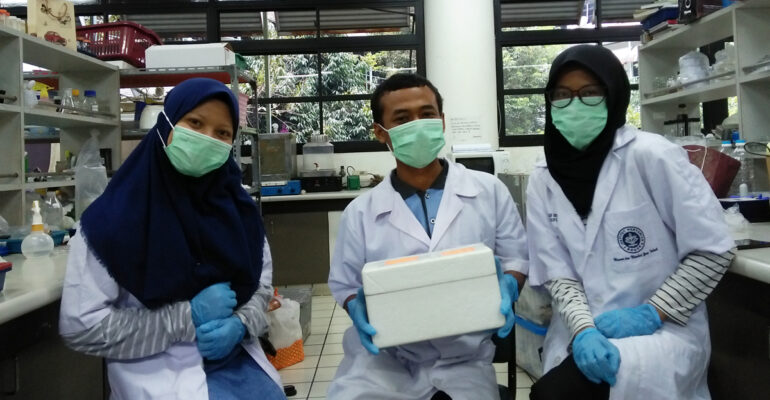IPB University Students Use Barcode DNA to Detect Nematoda Puru Roots on Bit

A number of IPB University students use DNA Barcode to detect the presence of root purse nematodes or root nodules in beetroot plants. The students are Ni Wayan Kartika Pratiwi, Fawwaz El Auly and Rosyid Amrulloh, who are students of the Department of Plant Protection, Faculty of Agriculture.
Ni Wayan Kartika, Chair of the Student Creativity Program (PKM) Team, assessed the presence of puru root nematodes (NPA) in beetroot plants important for attention. This is because NPA that attacks beet plants can result in the appearance of pustules or pustules on the roots and can cause tuber malformations. NPA attacks can also cause the plant to become stunted and withered so that its growth is disrupted. "Puru root nematodes that attack beetroot plants are from the genus Meloidogyne. The existence is only detected based on perineal patterns or buttocks, even though this technique requires high accuracy and accuracy," she said.
She explained, detection of NPA based on perineal patterns needs to be clarified using molecular detection. One of the molecular detections that can be used is the detection of NPA based on DNA sequences derived from cytochrom oxidase 1 (CO1).
To detect NPA using Barcode DNA, she continued, the first step to do is to design the primer mtCO1. The results of the design of the primer were used for DNA nematode amplification obtained. The primers designed must be specific so that they can know the name of the nematode to the species level.
The next step is DNA nematode extraction. DNA extraction was intended to obtain nematode DNA sequences. Furthermore, nematode DNA is amplified using a pre-designed mtCO1 primer.
Guided by Fitrianingrum Kurniawati, SP., M.Sc, Ni Wayan Kartika and friends succeeded in designing four specific primers for NPA namely Meloidogyne hapla, M. arenaria, M. incognita, and M. javanica. Of the four primers, two of them succeeded in amplifying nematode DNA in beetroot plants from Cipanas, namely Meloidogyne arenaria and Meloidogyne incognita species.
Fitrianingrum explained, this detection technique using DNA barcode is a detection technique that is fast, accurate and very easy to do for anyone, whether researchers, students, or officers of the plant quarantine agency.
"Meloidogyne nematodes are only an example of a model in this study, so that other parasitic nematodes can also be identified using this DNA barcode," she concluded. (RYS)



